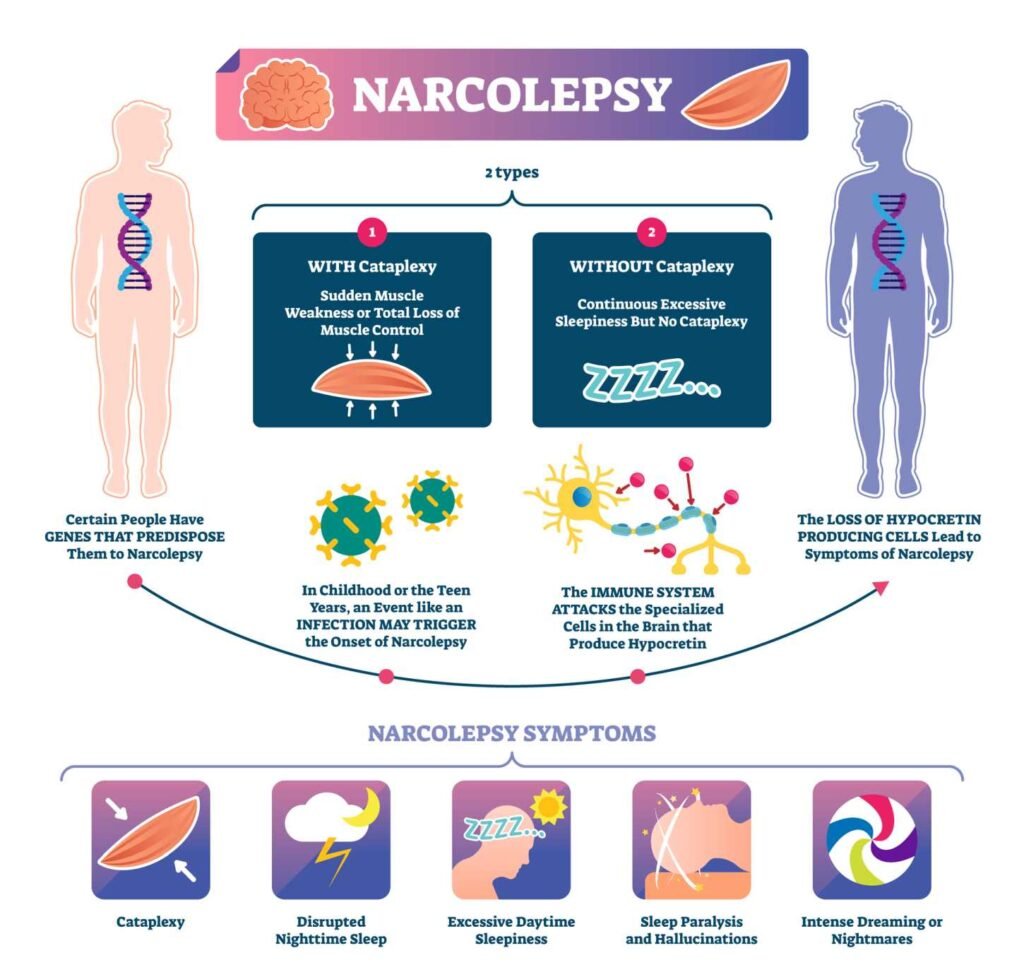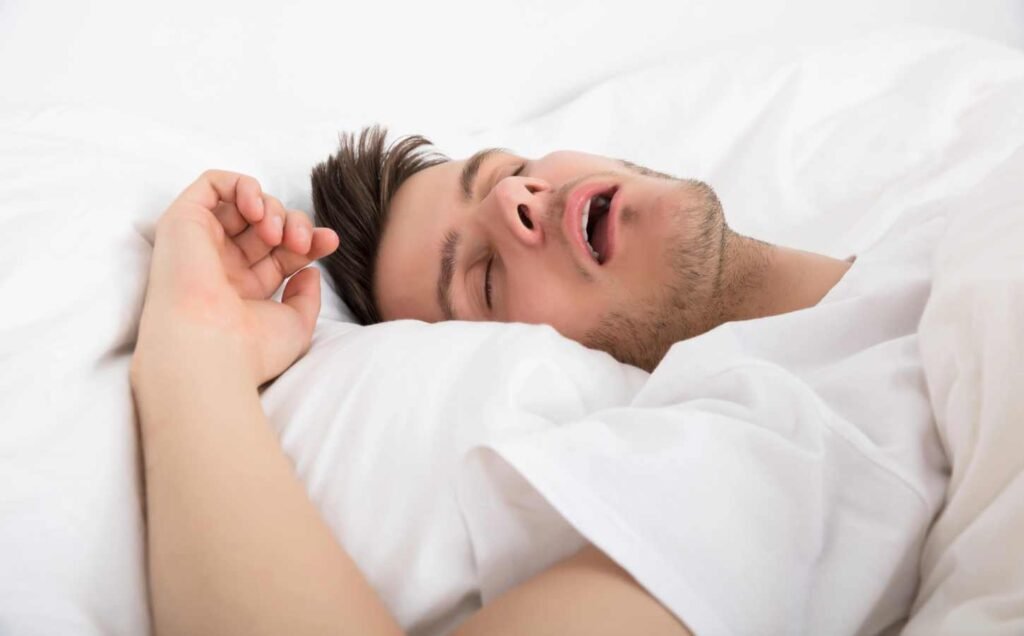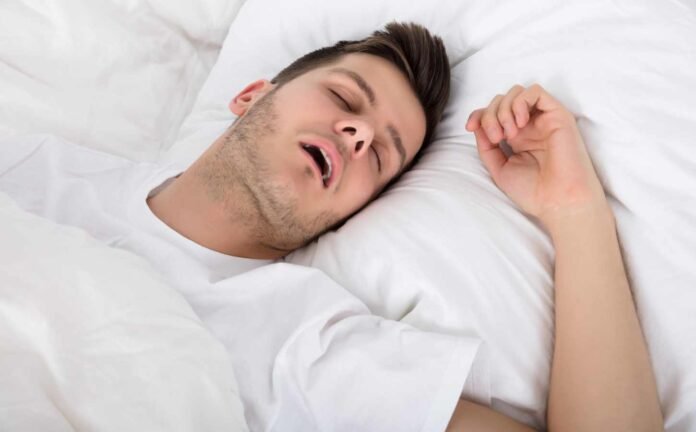Narcolepsy type 1 is a chronic neurological disorder that affects the brain’s ability to regulate sleep-wake cycles.
Narcolepsy type 1 is a rare condition that affects approximately 1 in 2,000 people worldwide. The disorder is characterized by excessive daytime sleepiness, sudden and uncontrollable sleep attacks, and other symptoms that can significantly impact a person’s quality of life.
The symptoms of narcolepsy type 1 can vary from person to person, but typically include excessive daytime sleepiness, cataplexy (sudden loss of muscle tone), sleep paralysis, and hallucinations. These symptoms can be disruptive to a person’s daily activities, affecting their ability to work, drive, or engage in social activities. In addition to these symptoms, people with narcolepsy type 1 may experience disrupted nighttime sleep, which can further exacerbate their daytime sleepiness.
Diagnosis of narcolepsy type 1 can be challenging, as there is no definitive test for the disorder. However, a combination of medical history, physical examination, and sleep studies can help doctors make an accurate diagnosis.
Treatment for narcolepsy type 1 typically involves a combination of medication and lifestyle changes, such as regular sleep schedules and avoiding certain triggers that can worsen symptoms. With proper treatment and management, many people with narcolepsy type 1 are able to lead fulfilling and productive lives.

Understanding Narcolepsy Type 1
Narcolepsy type 1 is a chronic neurological disorder that affects the brain’s ability to regulate sleep-wake cycles. This disorder is characterized by excessive daytime sleepiness, cataplexy, sleep paralysis, and hypnagogic hallucinations. Understanding the pathophysiology, symptoms, diagnosis, and evaluation of narcolepsy type 1 is important for effective management of the disorder.
Pathophysiology and Symptoms
Narcolepsy type 1 is caused by the loss of hypocretin-producing neurons in the hypothalamus, which leads to a deficiency of hypocretin in the cerebrospinal fluid (CSF). This deficiency disrupts the normal regulation of REM sleep, resulting in symptoms such as excessive daytime sleepiness, cataplexy, sleep paralysis, and hypnagogic hallucinations.
Cataplexy is a sudden loss of muscle tone triggered by strong emotions. Sleep paralysis is the inability to move or speak while falling asleep or waking up. Hypnagogic hallucinations are vivid and often frightening hallucinations that occur while falling asleep or waking up.
Diagnosis and Evaluation
Diagnosis of narcolepsy type 1 involves a thorough evaluation of symptoms, medical history, and sleep patterns. The multiple sleep latency test (MSLT) and polysomnography (PSG) are used to evaluate daytime sleepiness and sleep patterns. The MSLT measures the time it takes to fall asleep during the day, while PSG records brain waves, eye movements, and muscle activity during sleep.
The diagnosis of narcolepsy type 1 is confirmed by the presence of cataplexy and a deficiency of hypocretin in the CSF. The human leukocyte antigen (HLA) DQB1*0602 is also strongly associated with narcolepsy type 1.
In conclusion, understanding the pathophysiology, symptoms, diagnosis, and evaluation of narcolepsy type 1 is essential for effective management of the disorder. A sleep specialist can provide a thorough evaluation and recommend appropriate treatment options for individuals with narcolepsy type 1.
Management and Treatment Strategies
Pharmacological Treatments
There are several medications available to manage and treat Narcolepsy Type 1. These medications aim to improve wakefulness and reduce symptoms such as excessive daytime sleepiness, cataplexy, and sleep paralysis.
Stimulants such as Modafinil, Amphetamine, and Methylphenidate are commonly prescribed to improve wakefulness. Sodium Oxybate, Armodafinil, Pitolisant, and Histamine 3 Receptor Antagonist/Inverse Agonist are also effective in reducing excessive daytime sleepiness.
Antidepressants, such as Fluoxetine, Venlafaxine, Tricyclic Antidepressant, and Clomipramine, can also be effective in managing cataplexy and other symptoms of Narcolepsy Type 1.
Lifestyle Modifications and Support
Lifestyle changes can also help manage Narcolepsy Type 1. Maintaining a regular sleep schedule, taking scheduled naps, and avoiding alcohol and caffeine can help improve sleep quality and reduce daytime sleepiness.
In addition, individuals with Narcolepsy Type 1 can benefit from counseling and support groups. These resources can provide emotional support and help individuals learn coping strategies for managing their symptoms.
Overall, a combination of pharmacological treatments and lifestyle modifications can effectively manage and treat Narcolepsy Type 1. It is important for individuals with this condition to work closely with their healthcare provider to find the most effective treatment plan for their individual needs.
Narcolepsy Type 2: Symptoms, Causes, and Treatment

Narcolepsy Type 2 is a sleep disorder that is similar to Type 1 narcolepsy in terms of excessive daytime sleepiness, but it differs in the absence of cataplexy, which is a sudden loss of muscle tone triggered by strong emotions. People with Type 2 narcolepsy may experience other symptoms such as sleep paralysis, hallucinations, and disrupted nighttime sleep.
Continue reading about Narcolepsy Type 2
MaryRuth Organics Sleep Gummies Without Melatonin Review: Do They Work?

These gummies are designed to promote relaxation and support sleep quality for adults. Unlike many other sleep aids, they don’t contain melatonin, so you won’t wake up feeling groggy or drowsy.
Continue reading: MaryRuth Organics Sleep Gummies Without Melatonin




